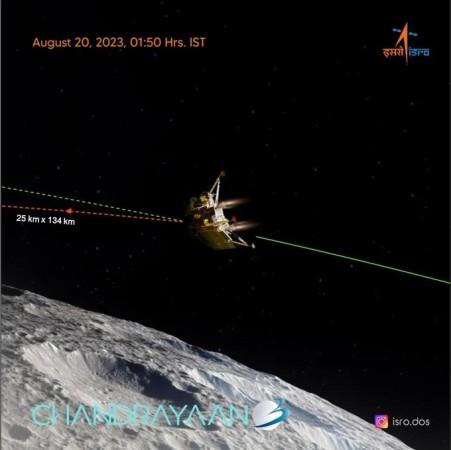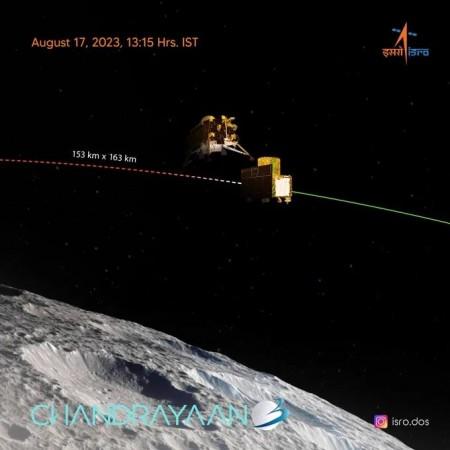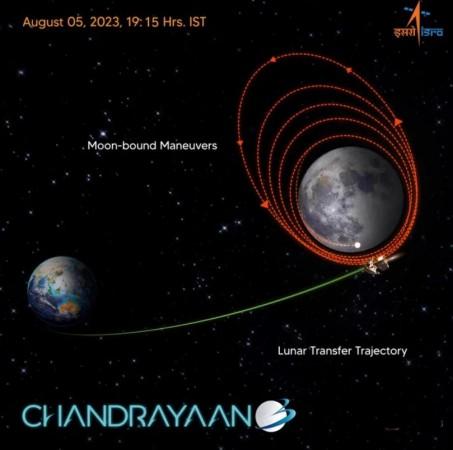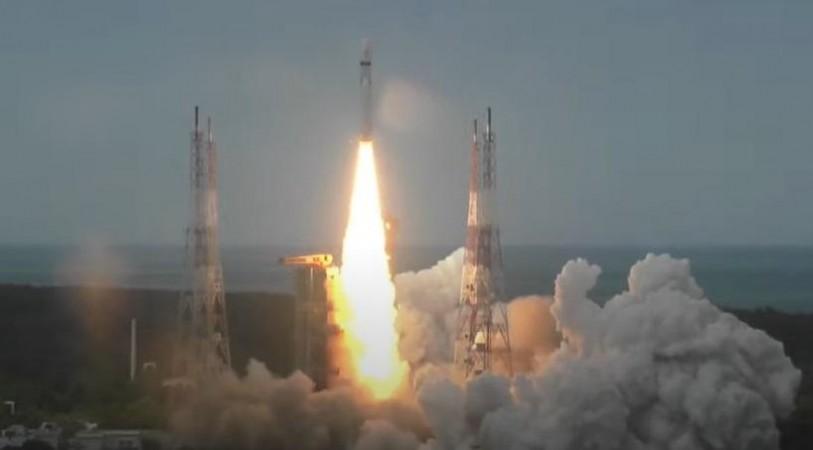In a matter of less than 48 hours, India's much-anticipated lunar mission, Chandrayaan-3, is set to attempt a historic landing on the Moon's surface. The scheduled touchdown is slated for tomorrow, Wednesday, at 6:04 pm.
The Indian Space Research Organisation (ISRO) has disclosed plans for a live broadcast of the event, which is set to commence at 5:20 pm tomorrow.
A milestone was achieved on Monday as Chandrayaan-3's Lander Module successfully established a two-way communication link with Chandrayaan-2's orbiter, the precursor mission that launched in 2019 with the aim of executing a "soft landing" on the Moon's south pole.
Despite its meticulous preparations, Chandrayaan-2's lander Vikram could not execute a successful landing and lost communication when it reached an altitude as close as 2.1 kilometers from the lunar surface.
In a recent statement, a senior ISRO scientist said that if unfavorable conditions arise, the Moon landing attempt could be postponed to August 27th.

Key insights shared on Tuesday reveal that Chandrayaan-3's soft landing may not go as planned if the lander's speed is not properly controlled. According to the ISRO official, during the descent from a 30-kilometer altitude tomorrow, the lander's velocity is expected to be 1.68 kilometers per second.
The reduction of speed is pivotal due to the influence of the Moon's gravitational force. Failing to regulate this speed could lead to a crash landing. If any anomalies are detected in the lander module's health parameters tomorrowy, the landing might be rescheduled for August 27th. Nilesh Desai, Director of Space Applications Centre at ISRO, revealed.
Chandrayaan-3's components include the Lander Vikram, which carries payloads like Chandra's Surface Thermophysical Experiment (ChaSTE) for temperature and thermal conductivity measurements, the Instrument for Lunar Seismic Activity (ILSA) for seismic readings, and the Langmuir Probe (LP) for estimating plasma density. A passive Laser Retroreflector Array, contributed by NASA, will be employed for lunar laser studies.

Additionally, the Rover Pragyan is outfitted with payloads such as the Alpha Particle X-ray Spectrometer (APXS) and the Laser Induced Breakdown Spectroscope (LIBS) to analyze the elements in the vicinity of the landing site.
ISRO's lunar exploration journey embarked in 2008 with the launch of Chandrayaan-1, the inaugural edition of the mission. It conducted comprehensive studies from an orbital altitude of 100 kilometers, assessing the Moon's chemical composition, mineralogy, and geology. Regrettably, on August 29, 2009, communication with Chandrayaan-1 was lost.

The sequel to this endeavor, Chandrayaan-2, was launched in 2019, featuring more intricate goals, particularly an attempt to land at the Moon's south pole. Despite accomplishing the necessary orbiting and de-orbiting maneuvers, Chandrayaan-2's lander, Vikram, ceased communication with ground stations, leaving the mission in a critical state.
ISRO recently showcased images captured by the Lander Hazard Detection and Avoidance Camera (LHDAC), which plays a pivotal role in identifying a secure landing zone devoid of obstacles like boulders or trenches during the descent.

With the spotlight on India's Chandrayaan-3 mission, the world waits with bated breath for its imminent lunar touchdown, a feat that could potentially reshape ISRO's future space exploration missions such as Mangalyaan-2 or Gaganyaan later.
(With inputs from IANS)














